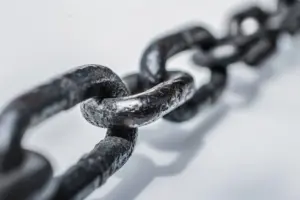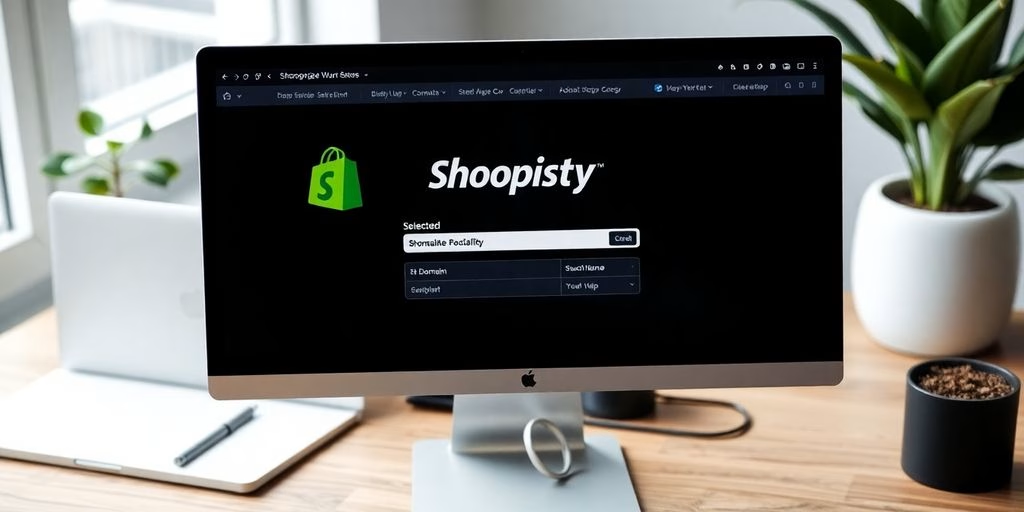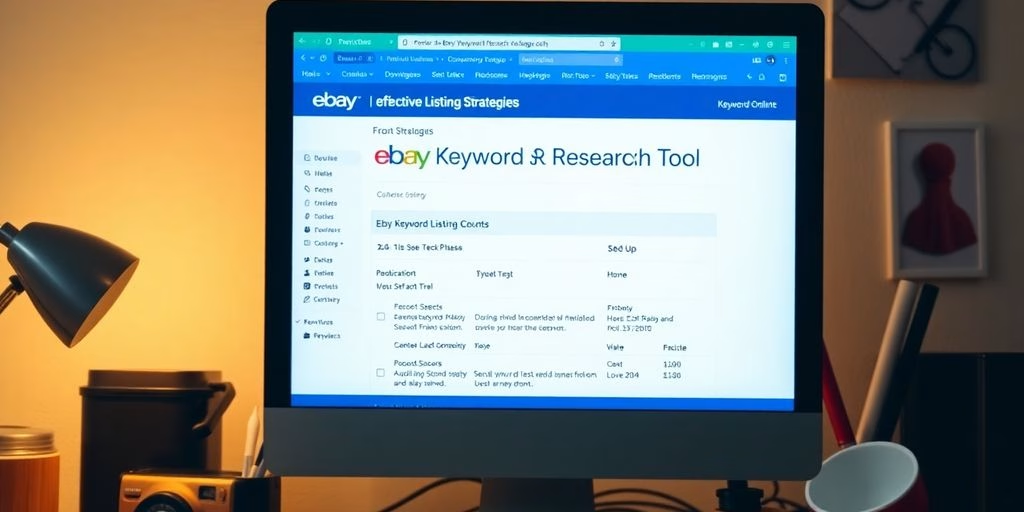In the dynamic world of SEO, external links are a crucial component in enhancing a website’s visibility and authority. The article ‘Maximizing SEO Potential through Strategic Use of External Links’ delves into the sophisticated strategies and practices necessary to harness the full power of external links for SEO success. By understanding the intricate balance between internal and external linking, recognizing common pitfalls, and staying informed about the evolving nature of SEO, webmasters and content creators can craft a robust linking strategy that propels their site to the top of search engine rankings.
Key Takeaways
- Recognize the dual importance of internal and external links in SEO, and how external links serve as magnets for increasing a website’s authority and search ranking.
- Develop a content strategy that is inherently link-worthy, ensuring that external links add value and relevance to your website.
- Implement a balanced approach to linking, optimizing the flow of link juice without compromising the user experience or triggering search engine penalties.
- Stay vigilant against common external linking errors and employ regular audits to maintain a natural and diverse link profile.
- Embrace the evolving best practices in link building and SEO, debunking myths and adapting to the latest industry standards for sustained success.
External Links as SEO Magnets

Understanding the Power of External Links
External links are the digital nods of approval from one website to another, a kind of SEO currency that can boost your site’s authority and visibility. Good on-page SEO and great content, when paired with high-quality external links, can propel your website to the top of search engine rankings. But it’s not just about quantity; the quality of the external links is what truly matters.
To truly harness the power of external links, one must not only focus on acquiring them but also on understanding their strategic use.
Here’s a quick rundown on why external links are invaluable:
- They act as endorsements, signaling to search engines that your content is valuable.
- External links can drive referral traffic, introducing new audiences to your site.
- They start the flow of link juice, which can improve the ranking of your linked pages.
Remember, external links are one of the best ways to improve SEO, but they must be used correctly. Implement essential link building techniques, and stay ahead with consistency and adaptability to leverage SEO for visibility and business benefits.
Crafting a Link-Worthy Content Strategy
In the quest for SEO dominance, the creation of magnetic content is non-negotiable. Content that resonates with your audience and provides genuine value is the cornerstone of a link-worthy strategy. It’s not just about churning out articles; it’s about crafting experiences that beckon for attention—and backlinks. To set the stage for a content strategy that attracts high-quality backlinks, consider the following steps:
- Identify your niche and understand what kind of content performs well within it.
- Analyze your competitors’ content to uncover gaps and opportunities.
- Create comprehensive, authoritative, and engaging content that stands out.
- Promote your content through social media, email marketing, and outreach to influencers and publishers.
Remember, a strategic approach to content creation is your ticket to earning those coveted backlinks. It’s about quality over quantity, and every piece of content should aim to add value to your readers and to the wider web.
By following these steps, you’ll not only enhance your site’s appeal to external publishers but also lay the groundwork for a robust backlink profile. Strategic link building in 2024 is not a numbers game; it’s a craft that requires patience, creativity, and a keen eye for what makes content share-worthy.
Measuring the Impact of External Links on SEO
To gauge the potency of your external links, think of SEO as a cocktail party where your links are the guests mingling and spreading the word about your content. The right mix can make your site the talk of the town. But how do you measure the buzz? Start with a few key metrics:
- Referral traffic: The number of visitors arriving at your site via external links.
- Link quality: The authority and relevance of the linking site.
- Anchor text relevance: How well the link’s anchor text aligns with your content.
- Backlink growth: The pace at which your backlink profile expands.
Remember, it’s not just about quantity; the quality of your external links can make or break your SEO efforts.
By leveraging tools like Ahrefs or Moz, you can dive deep into the data, tracking not just the number of backlinks, but their impact on your site’s authority. It’s a blend of art and science, where strategic link acquisition meets meticulous monitoring. And while outbound links are beneficial, avoid the trap of diluting your content’s value with excessive, irrelevant links.
Link Juice: Turning External Links into SEO Gold

Balancing Internal and External Linking for Optimal Flow
In the grand chess game of SEO, your pawns are your internal links, and your knights and bishops? Those are your external links. Each has its role, its power, and its particular path across the board. Balancing these two forces is essential for a checkmate against obscurity.
Internal linking weaves a spider’s web of relevancy and ease within your site, guiding users and search engines alike through your content. But without the external links, your web might as well be in a vacuum. These are the bridges that connect your island of content to the mainland of the internet, bringing in traffic and authority.
- Prioritize Internal Links: They keep users engaged and help search engines understand your site structure.
- Cultivate Quality External Links: These are endorsements that boost your site’s authority.
- Regular Link Audits: To ensure the flow remains unblocked and strategically sound.
Remember, it’s not just about quantity; the quality of links often trumps sheer numbers. A well-placed external link can be worth its weight in SEO gold, while a poorly thought-out internal link can lead to a dead end.
By regularly auditing your links and understanding the algorithms that drive search engine behavior, you can refine your strategy to ensure that your SEO page emphasizes quality content, strategic keyword placement, and the importance of backlinks for SEO success.
The Do’s and Don’ts of External Link Acquisition
In the quest to adorn your website with the SEO-boosting links it deserves, remember that not all glitter is gold. Do reach out to small bloggers and industry giants alike, as they can provide valuable endorsements to your content. But, don’t be tempted by the siren call of the NoFollow tag; it’s a silent killer of link juice.
- Do use reliable sources to ensure the credibility of your links.
- Don’t neglect the importance of appropriate anchor text; it’s the secret handshake of SEO.
- Do browse external opportunities with a keen eye for relevance and authority.
Remember, the path to link acquisition is fraught with choices—choose wisely to avoid the common pitfalls.
While acquiring high-quality backlinks requires strategic planning, avoid the chaos of random link structures. Focus on a logical hierarchy, ensuring that your main pages link to subpages in a way that makes sense to both users and search engine crawlers. Ignoring link quality for quantity is a fool’s errand; prioritize informative, high-value pages to link to.
Evaluating the Quality of Potential Link Sources
In the grand chess game of SEO, not all pieces are created equal. The same goes for backlinks. Quality trumps quantity when it comes to the links pointing to your site. But how do you evaluate the quality of a potential link source? Here are some key factors to consider:
- Domain Authority (DA) or Domain Rating (DR): A higher score typically indicates a more authoritative site, which can pass more link juice to your site.
- Relevance: The linked content should be relevant to your own, ensuring that the backlink is meaningful and beneficial.
- Traffic: High traffic numbers can be a good indicator of a site’s quality and the potential for referred traffic.
Remember, a diverse backlink profile from various authoritative sources is your SEO safety net. It guarantees stability for your website’s performance, even if individual links fluctuate.
Evaluating backlink quality is a nuanced process, but by focusing on these factors, you can better assess which external links will be SEO goldmines.
Common Blunders in External Linking

Identifying and Rectifying Linking Mistakes
In the quest for SEO supremacy, it’s easy to fall prey to the siren song of quick fixes and shady tactics. But beware, for the path is fraught with linking mistakes that can derail your efforts. To steer clear of these blunders, one must first learn to identify them. For instance, over-optimizing anchor texts can raise red flags for search engines, while broken or dead links serve as roadblocks to both users and crawlers alike.
Google Analytics and Google Search Console are your trusty sidekicks in this endeavor, helping you pinpoint and patch up those pesky broken links. There are mainly three ways to address them: updating, removing, or redirecting. But remember, it’s not just about fixing what’s broken; it’s about ensuring the overall quality and relevance of your backlinks.
Consistency and patience are key for a robust link profile.
To maintain a healthy link ecosystem, focus on relevance, trust, and optimization for search engines. Here’s a quick checklist to keep your external linking strategy on track:
- Ensure anchor texts are natural and varied.
- Regularly check for and fix broken links.
- Balance linking to high-quality, informative pages over sheer quantity.
- Avoid link schemes and ensure a diverse link profile.
Navigating the Perils of Link Schemes
In the quest for SEO success, the allure of quick wins through link schemes can be tempting. However, steer clear of these deceptive shortcuts; they’re more trouble than they’re worth. Link schemes are like the junk food of SEO—tempting, but ultimately harmful to your site’s health.
- Avoid buying links: It’s like paying for friends; it doesn’t earn you genuine respect in the long run.
- Steer clear of excessive link exchanges: It’s not about who you know, but how authentically you connect.
- Beware of automated link creation: If it sounds too easy, it probably is—and search engines will agree.
Remember, a robust backlink profile is not just about quantity, but the quality of each connection. Quality control and strategic link building are your true north in charting a course through the treacherous waters of link schemes.
While it’s essential to build alliances with authority sites, this should be done through high-quality content and ethical practices. Regular link audits are your compass, helping you identify valuable backlinks and disavow those that could drag you down. Keep your link profile natural and diverse, and you’ll sail towards a horizon of sustainable SEO success.
Keeping Your Link Profile Natural and Diverse
In the grand chess game of SEO, your link profile is the queen. It’s powerful, versatile, and when played correctly, can swiftly checkmate your competition. A natural link profile is the cornerstone of SEO success, and diversity is its most trusted knight. A varied backlink portfolio signals to Google that your site’s growth is organic, not the result of artificial manipulation. This is where the concept of link diversity comes into play, as highlighted by Serpzilla.com’s definition and best practices.
Quality backlinks, diverse link profiles, and strategic anchor text are the trifecta of SEO triumph.
To maintain this natural diversity, consider the following points:
- Aim for a mix of follow and nofollow links.
- Acquire backlinks from a variety of domains.
- Ensure a balanced distribution of link types (e.g., editorial, forums, blogs).
- Vary your anchor text to avoid patterns that search engines might deem manipulative.
Remember, reputable sites in your industry are gold mines for valuable backlinks. Regularly monitoring your backlink profile is essential to weed out any toxic links that could harm your site’s reputation. After all, the goal is to build a backlink profile that not only looks good on paper but also genuinely enhances your site’s authority and organic ranking.
The Synergy of Links: Integrating Internal and External Strategies

Complementing Internal Links with External Powerhouses
While internal links are the unsung heroes, quietly structuring the narrative of your site, external links are the megaphones, broadcasting your content’s value to the world. To maximize SEO potential, one must master the art of balancing these two forces.
Consider the alchemy of link building: external powerhouses can amplify the authority of your internal pages. But how do you ensure that these external titans are not just loud, but also eloquent? Here’s a quick guide:
- Identify high-value pages: Use analytics to find your content gems.
- Craft compelling content: Make your pages irresistible link bait.
- Strategic outreach: Connect with relevant influencers and authority sites.
- Monitor and adjust: Keep an eye on link performance and tweak as needed.
Remember, the goal is not just to attract external links, but to create a harmonious link ecosystem where internal and external links support and enhance each other.
Creating a Cohesive Linking Ecosystem
In the verdant garden of SEO, a cohesive linking ecosystem is the trellis that supports the growth of your site’s visibility. Boldly intertwining internal and external links creates a network that not only guides users through your digital domain but also signals to search engines the relevance and authority of your content.
To cultivate such an ecosystem, consider these steps:
- Ensure that internal links are strategically placed to enhance content cohesion.
- Engage in guest posting to sow seeds for potential backlinks.
- Monitor backlinks regularly to prune any that may harm your site’s reputation.
In the quest for a robust linking strategy, remember that quality trumps quantity. Strategic link-building in 2023 involves quality connections, keyword research, shareable content, guest posting, and backlink monitoring. Embrace evolving strategies for online success and SEO dominance.
By nurturing these practices, you’ll not only create a network of paths within your site but also forge connections with the wider web. This harmonious balance is essential for any E-E-A-T-focused content strategy, where the method you choose must suit your needs and ensure a natural link building process.
Regular Audits: Keeping Your Link Strategy Sharp
Think of your website as a bustling metropolis, with links as the roads that connect every district. Just as a city needs regular checks to keep traffic flowing smoothly, your website requires regular audits to ensure that the link infrastructure is functioning optimally. These audits are not just about fixing what’s broken; they’re about refining and enhancing the pathways that lead users and search engines through your content.
Regularly Update and Audit Internal Links: As your site grows and evolves, some links may become outdated or broken. Regular audits can help ensure all internal links are functional and relevant. Moreover, consider the strategic placement of links. Those higher up in the content may carry more weight with search engines than those near the end. Place important links where they are likely to be seen and clicked by users.
To maintain a sharp link strategy, it’s essential to assess the backlink profile periodically. This involves evaluating the quality and quantity of backlinks pointing to your website, which are crucial for SEO success.
Remember, a well-oiled link strategy is not a set-it-and-forget-it affair. It’s a dynamic process that requires attention to detail and a willingness to adapt. By conducting regular audits, you can identify patterns in errors or issues, such as clusters of broken links, and take corrective action before they impact your SEO performance.
Link Building Lore: Mastering the Myths and Realities

Debunking Common Link Building Misconceptions
In the realm of SEO, myths about link building are as common as cat videos on the internet. One pervasive myth is that more links always lead to better rankings. This is a fallacy; the quality of links is far more important than sheer numbers. Let’s dispel some of these misconceptions with a touch of wit:
- Quantity vs. Quality: A handful of high-quality links can trump a truckload of mediocre ones.
- Instant Results: SEO is a marathon, not a sprint. Don’t expect overnight success.
- The More, The Merrier: Not all links are created equal. Relevance and authority matter.
- Buying Your Way to the Top: Purchasing links can lead to penalties, not prominence.
Remember, a sustainable SEO strategy is built on the foundation of quality over quantity and ethical practices.
Mastering the art of link building requires understanding that it’s not just about getting any link; it’s about getting the right ones. Strategic guest blogging, innovative link building techniques, and effective strategies for backlinks are the cornerstones of SEO success. Choose quality over quantity in link building, and watch your SEO potential soar.
Embracing the Truths of Effective Link Building
In the realm of SEO, link building is akin to the high-stakes game of chess; every move must be strategic and deliberate. To truly embrace the truths of effective link building, one must understand that it’s not just about the quantity of links, but the quality that reigns supreme.
- Natural link acquisition is the holy grail, where your content is so compelling that it earns links without solicitation.
- Manual outreach and relationship building are the bread and butter of personalized link building strategies.
- Technical SEO optimization ensures that your domain’s authority is not just perceived, but also recognized by search engines.
By focusing on these core aspects, you can cultivate a backlink profile that not only boosts your SEO but also enhances your brand’s credibility and trustworthiness. Remember, in the world of SEO, a well-placed link can be the difference between obscurity and prominence.
Staying Ahead of the Curve with Evolving SEO Practices
In the ever-shifting sands of SEO, staying ahead of the curve is not just a mantra; it’s a survival tactic. As search engines refine their algorithms, the savvy digital marketer must be nimble, ready to adapt strategies that align with the latest industry trends. To ensure your SEO practices don’t become relics of a bygone era, consider these steps:
- Follow SEO experts and industry news to catch wind of emerging trends.
- Attend webinars and networking events to exchange insights with peers.
- Allocate resources for ongoing training and conferences to empower your team.
By proactively adapting to SEO changes, you can safeguard your website’s relevance and competitive edge.
Remember, the digital marketing landscape is a battleground of visibility. Brands that invest in understanding the nuances of SEO, from domain authority to the subtleties of meta descriptions, can dominate their niche. Keep your content strategy audience-targeted, and stay informed about the top SEO trends, such as the importance of first-hand experience in content (the new “E” in E-EAT).
Dive into the depths of ‘Link Building Lore’ and unravel the myths and realities that shape the digital landscape. Don’t let misconceptions hold you back; visit our website to discover how our expertise can elevate your online presence. Together, we’ll forge a path to success with strategies that stand the test of time. Connect with us now and take the first step towards mastering the art of link building.
Conclusion: The Art of Linking Unveiled
In the grand tapestry of SEO, weaving in external links is akin to adding glittering threads that catch the search engine’s eye. It’s not just about sprinkling links willy-nilly, though; it’s about crafting a strategic pattern that enhances your site’s authority and allure. By judiciously selecting external links that complement your content’s narrative, you create a masterpiece that’s both user-friendly and SEO-enriched. So, as you bid adieu to this article, remember that each link is a potential brushstroke on your website’s canvas, and with the right strokes, your SEO potential can transform into a vivid picture of success.
FAQs
What is the significance of external links in SEO?
External links are crucial for SEO as they help to increase the authority of your site and specific pages, which improves your chances of ranking higher in search engine results. These links initiate the flow of ‘link juice’ to your website, signaling to search engines that your content is valuable and trustworthy.
How can I create content that attracts external links?
To create link-worthy content, focus on crafting high-quality, informative, and unique content that provides value to your audience. This can include original research, comprehensive guides, or insightful analysis that others in your industry will want to reference and link to.
What are some common mistakes to avoid with external linking?
Common mistakes include participating in link schemes, acquiring links from low-quality or irrelevant sources, and having an unnatural or unvaried link profile. It’s important to acquire links ethically and to focus on the quality rather than the quantity of links.
How does internal linking complement external linking strategies?
Internal linking helps distribute link juice acquired from external links across your site, enhancing the SEO value of multiple pages. It also improves user experience by making navigation easier, which can indirectly influence your site’s attractiveness for external links.
What should I consider when evaluating the quality of potential link sources?
When evaluating link sources, consider the relevance of the site to your niche, the authority of the linking site, the content quality, and the natural context in which the link would appear. High-quality sources are those that are respected within their industry and have a strong link profile themselves.
Is it possible to have too many internal links on a single page?
Yes, having too many internal links on a page can overwhelm users and dilute the link equity passed to each link. It’s important to use internal links judiciously and ensure they are contextually relevant and add value to the user’s experience.

![A Comprehensive Guide to Google Play Console Pricing [n8n]](https://cworks.id/wp-content/uploads/2025/09/cover-image-24622.avif)
![Understanding the Google Play Console Price: What Developers Need to Know [arvow]](https://cworks.id/wp-content/uploads/2025/05/4755037cthumbnail.avif)






































































































